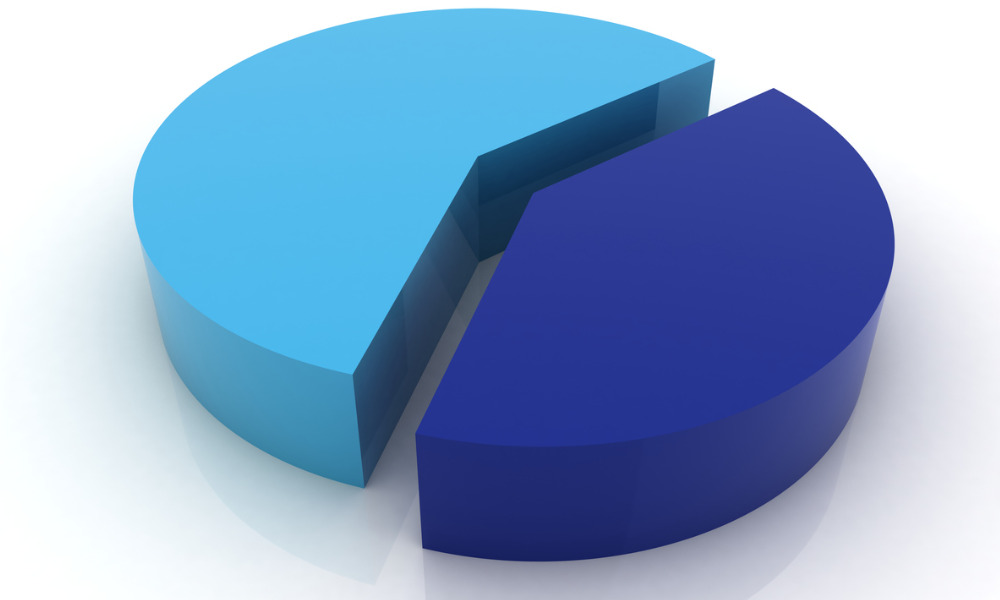CIO at SLGI Asset Management outlines why he thinks a 60/40 portfolio can deliver, despite the uncertainties still ahead

There’s nothing like a moment of market euphoria to make us feel like we’re out of the woods. 2023 ended with a rally, the S&P 500 broke records in the first month of 2024, and investors bet that the United States at least would negotiate the fabled ‘soft landing’: tamed inflation without recession. While there may be more positivity on the markets than we saw last year, uncertainty persists. A US soft landing is not guaranteed. The Canadian economy appears far less likely to achieve the same happy outcome may predict in the US. Canadian investors need strategies that can suit uncertain markets and new performance dynamics.
Chhad Aul sees the uncertainty behind what has been relatively strong market performance since Q4 of 2023. The Chief Investment Officer and head of multi-asset solutions at SLGI Asset Management recently penned an outlook for investors, outlining what the rest of 2024 might hold. He explored the unknowns that still lie ahead, like the possibility of a US soft landing and the risk of a systemic stress event. In an interview with WP he explained that as investors seek solutions to this uncertainty, they may want to consider the 60/40 portfolio allocation they largely abandoned when inflation was at its peak.
“Our work has shown that as inflation falls to a tipping point of around 3 per cent, the correlation between equities and bonds flips. In a higher inflation environment, equity and bond performance has been correlated, but once we cross into that 3 per cent range where we are now, the correlation turns negative and you get that diversification,” Aul says. “Many investors and advisors, with the higher rates they could get in cash and the higher risk move significant portions of their portfolios to cash investments, earning great yields without having to deal with some of the day-to-day volatility in fixed income…The narrative now has moved to when we begin to see rate cuts, and the reinvestment risk on those cash investments becomes a bigger issue. As soon as those rate cuts are on the table, the market will move quite quickly.”
Read more: Why the Fed won't cut tomorrow, and won't cut in March (probably) | Wealth Professional
Aul therefore believes that advisors should consider realigning their clients’ fixed income allocations closer to that 40 per cent target. Many of the assets that gained popularity while fixed income struggled, such as cash products or alts, can still play a role in portfolios. However, advisors should be clear-eyed about how useful bonds can be for their clients once more. Rate cuts are a question of when, not if, and Aul thinks a bond allocation should match that outlook.
The remaining 60 per cent equity allocation comes with less certainty. If the US economy negotiates its soft landing, Aul believes there could still be positivity in the equity space. If the US falls into a recession, that could be much more challenged. Even if there is positive performance in equities this year, Aul thinks we are unlikely to see the same concentration in mega-cap technology names that we experienced last year. It’s more likely that some of the smaller-cap tech names, as well as major consumer discretionaries, catch up with the so-called ‘magnificent seven.’
If the US falls into a recession, Aul thinks that traditional defensive sectors like utilities, consumer staples, and healthcare could offer solid performance. Because last year’s performance was driven by such a concentrated set of stocks, it was hard for active managers to beat the performance of market-weighted indexes. This year, Aul predicts that will be different in either a soft or hard landing scenario. He thinks active management can play a key differentiating role in 2024.
Read more: Entries are now open for Canada's top advisors | Wealth Professional
While Aul thinks a US soft landing is likely, he notes that Canada has not shown the same degree of resilience in its economy or consumer spending. The Bank of Canada, therefore, is under more pressure to cut than the US Federal Reserve. That is some of why he prefers Canadian bonds, given that yields may fall sooner and steeper here than in the US. On the equity side, conversely, Aul prefers US allocations due to the stronger underlying US economy, as well as the relative lack of tech stocks available on Canadian exchanges.
Aul believes that advisors should be treating 2024 as a chance to reset. That includes a reconsideration of both fixed income as an asset class and the 60/40 as an allocation strategy. It also involves a move away from cash and cash instruments, because the calculus that suited them in 2023 is already changing in 2024.
“I think, in many cases, advisors will want to address some of what we’ve seen in cash investments that have been pretty popular over recent years. I think it’s time to address the opportunity to reinvest,” Aul says. “Many of those investments were probably sourced from longer dated fixed income, and I think it makes sense to move into fixed income again.”



